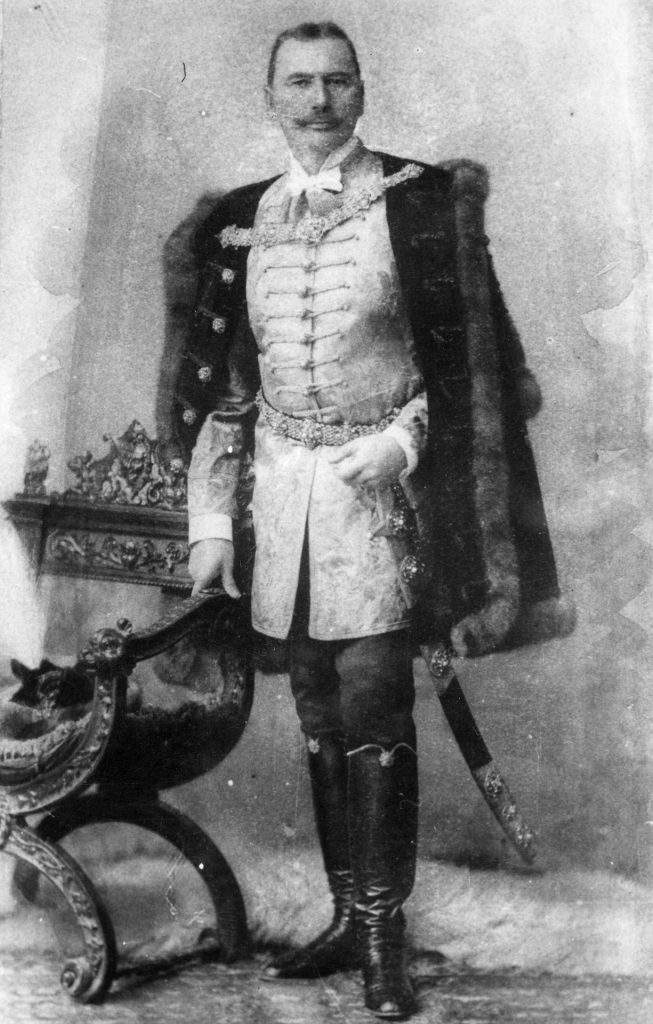
The Bishop’s host in Zagreb in November of 1884, Ljudevit Vranyczany, was a prominent philanthropist and patron of arts, just like his younger brothers, Dragan and Vladimir. Growing up in a nationally conscious and socially engaged noble family, endowed, moreover, with a cosmopolitan spirit and interest in art, he actively supported local cultural and educational institutions and artists. “The patriotic baron”, as he was referred to in contemporary newspaper overviews of the opening ceremony, had in early October offered Strossmayer to stay in his home, located next to the Academy’s palace on the south-eastern corner of Zrinski Square, along with his secretary Cepelić, for the duration of the festivities. The luxurious corner building finished only a year earlier, was constructed according to the project of prestigious Viennese architect, Otto von Hofer, from the studio of the imperial architect, Carl von Hasenauer.
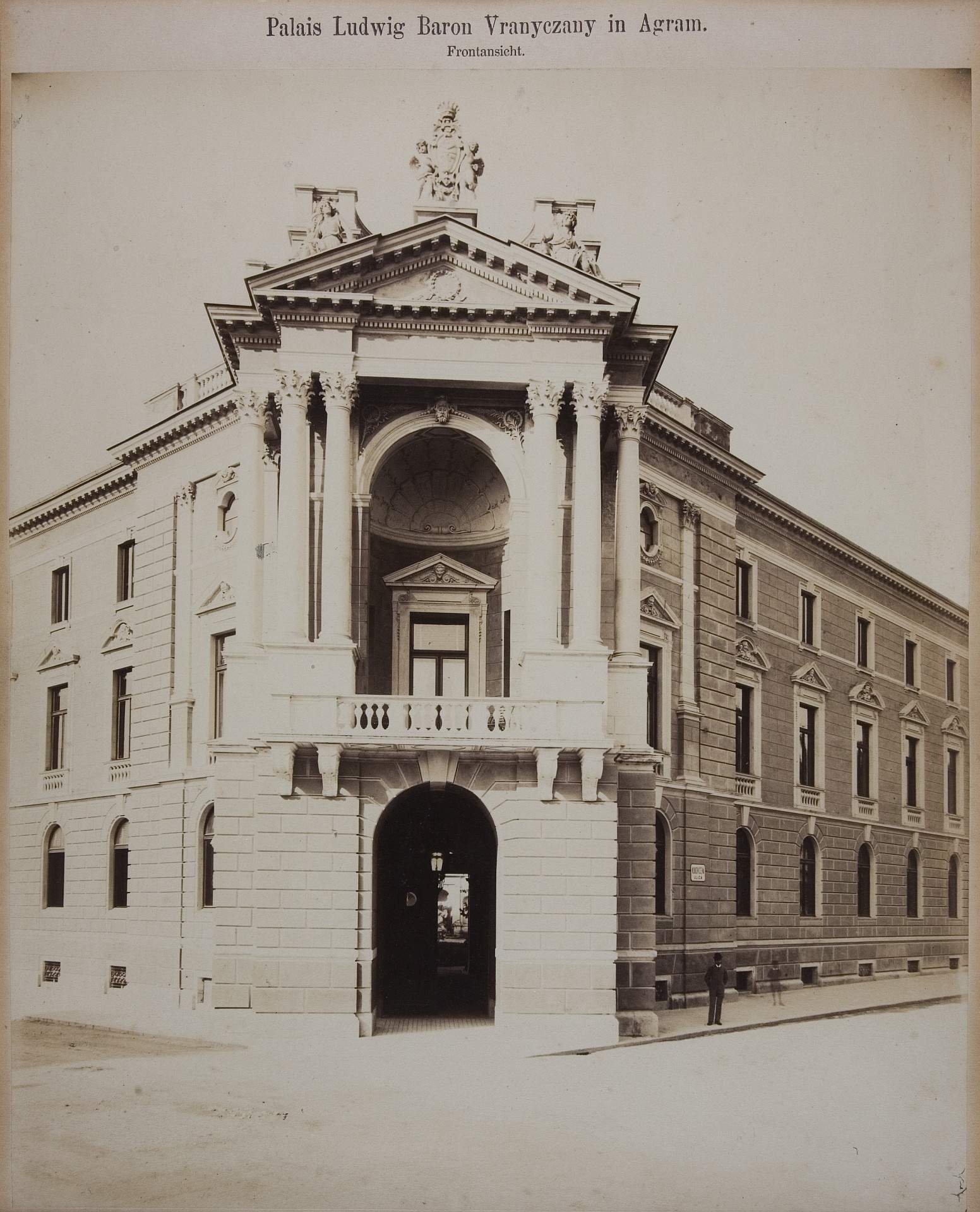
Luckily and to the pride of Zagreb, our esteemed Baron Ljudevit Vranyczany-Dobrinović built a beautiful palace neighboring the Academy on Zrinski Square, with a lovely park in the courtyard, as well as a balcony (loggiata) standing on marble columns and protruding onto the square. His entire home, all of its halls and comforts, the patriotic baron offered to the Bishop to use during his stay in Zagreb. From the balcony of Vranyczany’s palace, one can see the Academy, the entire park on Zrinski Square, other palaces surrounding it, the façades of four two-story houses on the left side of Valerija Street, the tower and roof of the cathedral to the south-east, and Zagreb’s mountain; therefore, there could be no better house in Zagreb more worthy of the founder of the Academy and donor of the gallery, who came to preside over the its opening.(from: “Opening ceremony of the Strossmayer Gallery of Pictures in Zagreb on 8th and 9th November 1884”, Zvonimir, 1886)
The interior decoration of Baron Ljudevit’s apartment, which encompassed most of the first floor – while the ground floor, first floor of the east wing and second floor were leased – reflected the crash of aristocratic and patrician taste. The decoration inspired by interiors of the Viennese high nobility was most obvious in the representative parts of the palace – the entrance hall, ceremonial hall, and the blue salon.
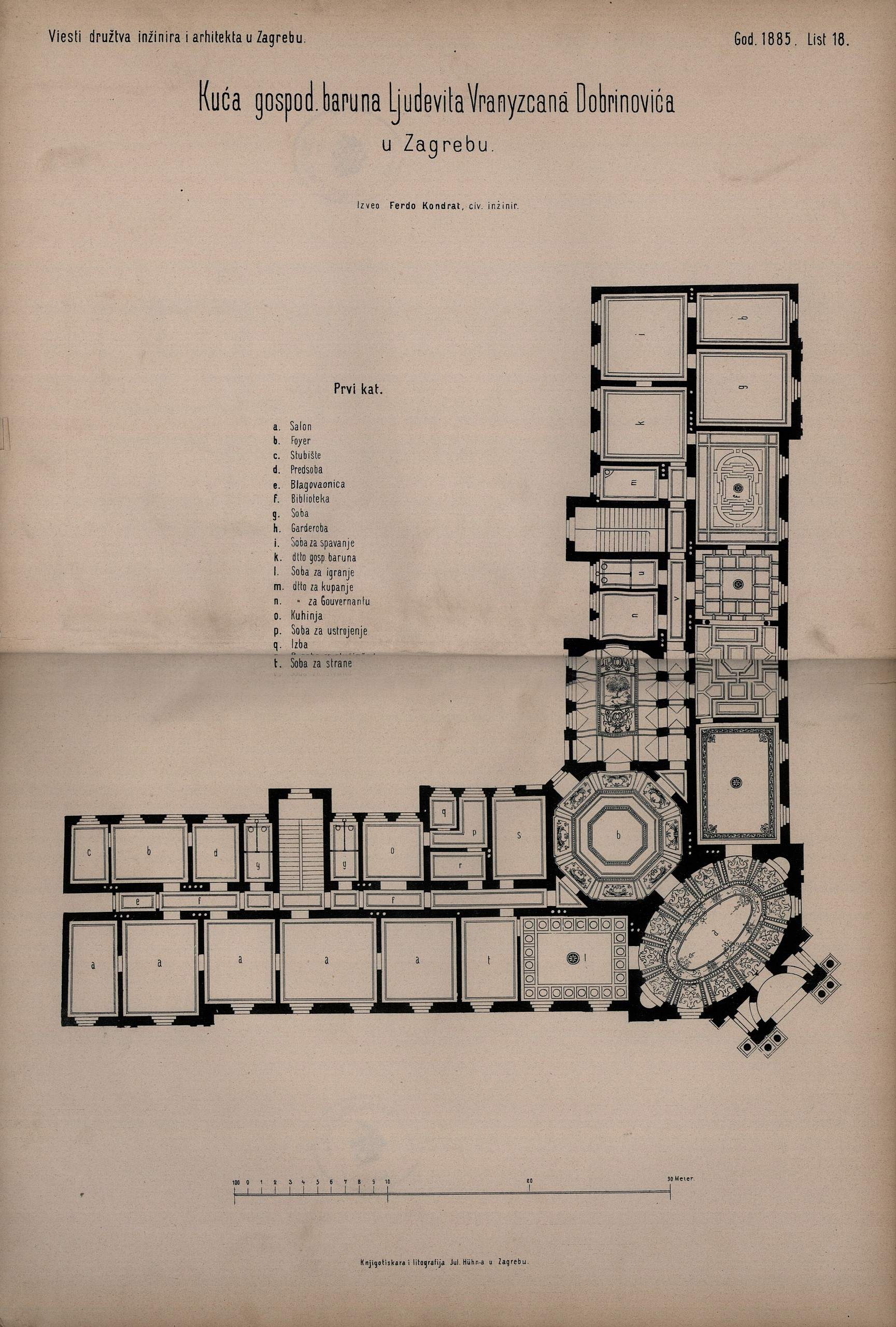
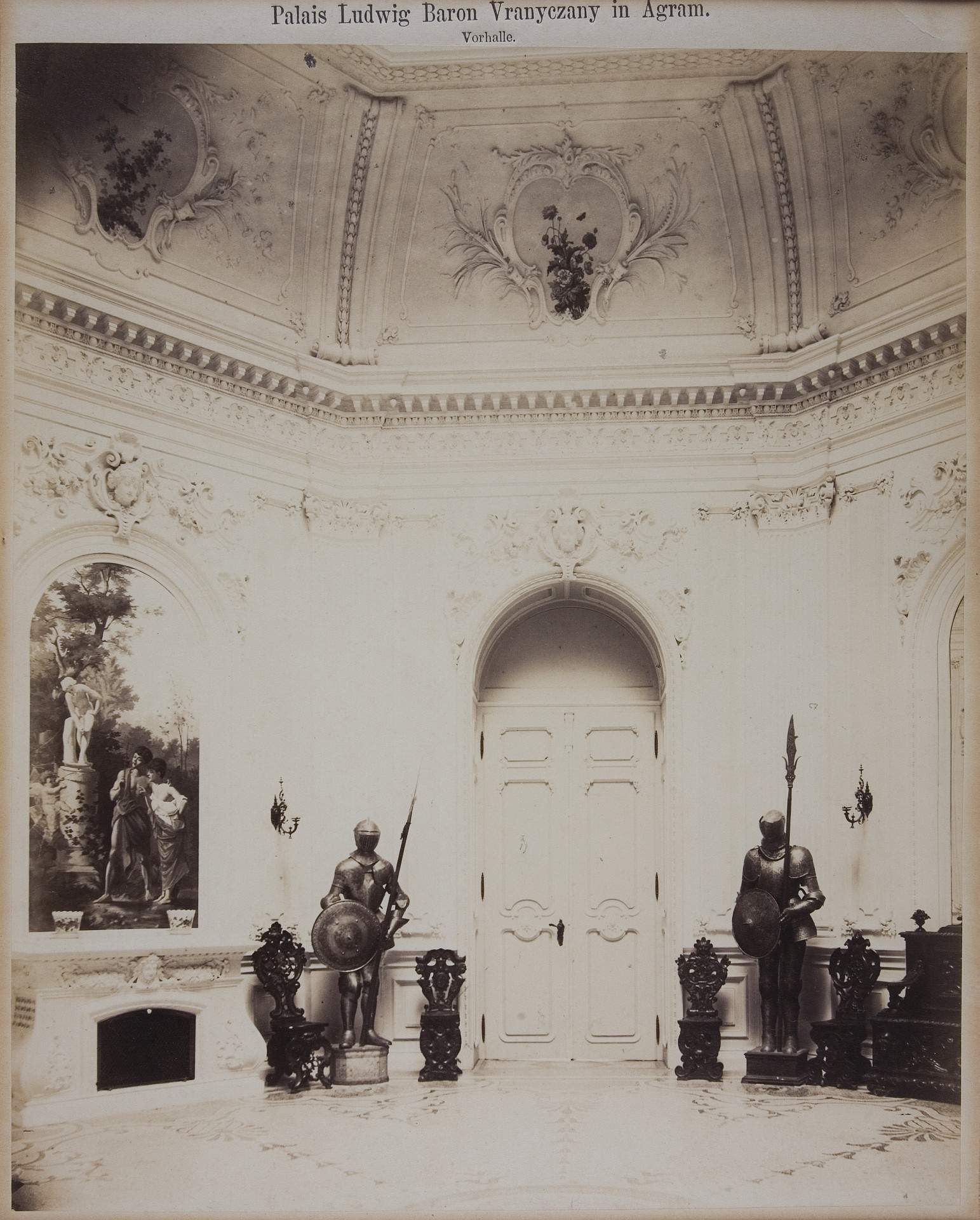
During the Bishop’s stay, the Baron organized an array of receptions, rich banquets and buffets in his honor, which were extensively reported on in newspapers. Reports included detailed counts of guests and vivid accounts of toasts.
It is worth mentioning the toast that the Baron gave for the occasion, in which he said that his house was too small to accommodate all of the Bishop’s friends, and that it would need to be at least as big as Croatia to do justice for the Bishop’s glory and the number of his admirers. Nevertheless, the Bishop is delighted with this cramped house, which is worthy of his glorious reception and his most important friends. To this, they all raised their glasses to welcome the Bishop. Ivan Mažuranić replied to the host saying that the marvelous reception in his palace is fitting of a palace’s splendor, and the noble generosity of the hearts of the Vranyczany family, who always serve the national idea, just as this time their noble palace serves a national festival. Then they drank to the host’s health and to his deserving leadership of the progress of the noble and wealthy!(from: “Opening ceremony of the Strossmayer Gallery of Pictures in Zagreb on 8th and 9th November 1884”, Zvonimir, 1886)
By organizing the official banquet for the most important guests of the ceremonial session on 9th November, he saved the City of Zagreb a great deal of money. The total engagement during those several days of manifestations contributed to the efforts of the city committee to take the gallery opening from an initially humble ceremony under the Academy’s patronage to a first-class social event. For this, the city council finally gave Vranyczany the title of honorary citizen.
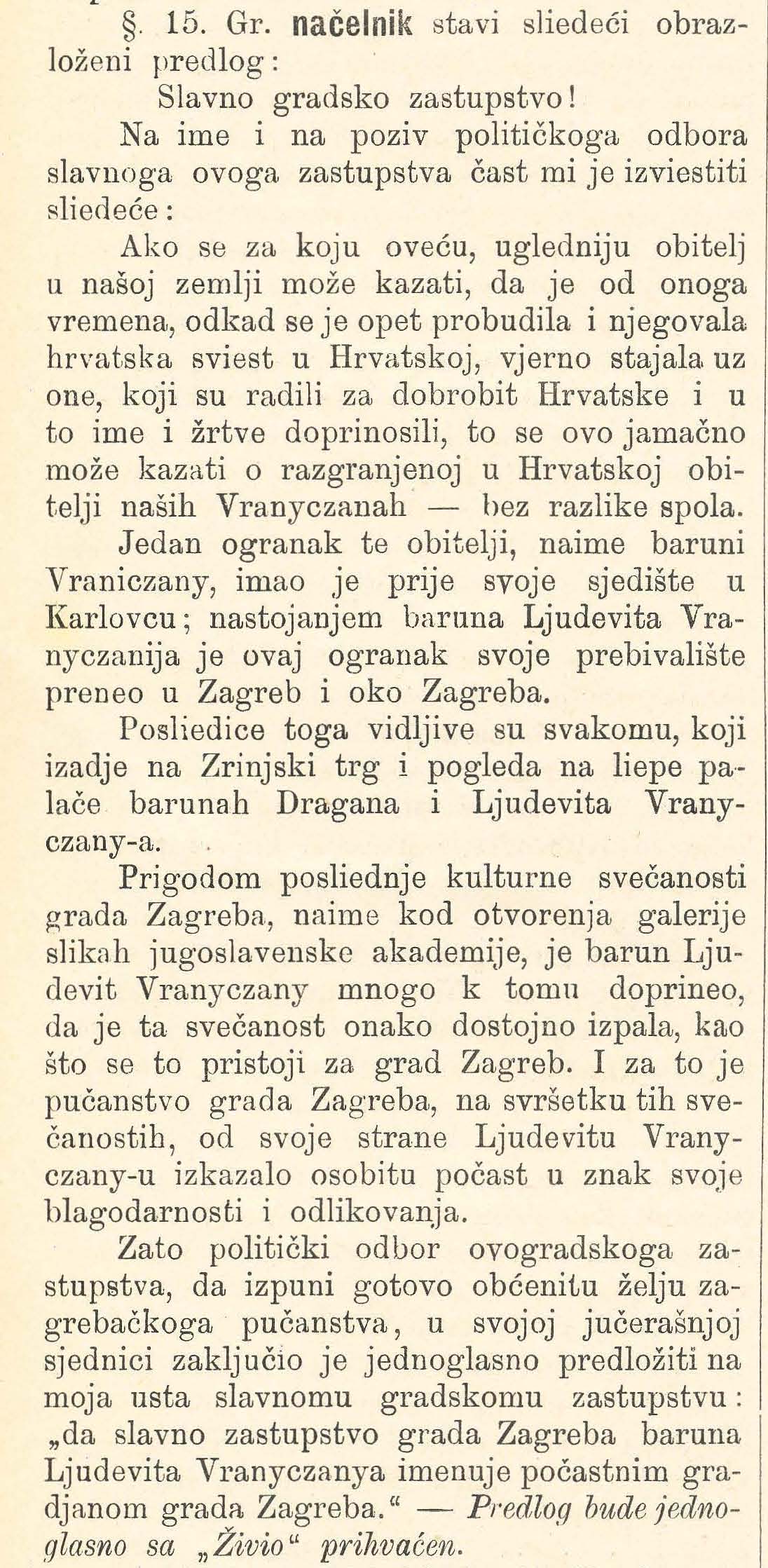
The Bishop showed his gratitude to Vranyczany by giving him a marble bust of himself, which was the work of sculptor Donegani. The bust was exhibited in the great hall of the Baron’s palace. As of 1891, it has been recorded in the catalogues of the Strossmayer Gallery as being located in the lobby, or archways, of the second floor of the Academy’s palace. However, the bust was subsequently extracted from the holdings of the Strossmayer Gallery and ended up in the Modern Gallery.
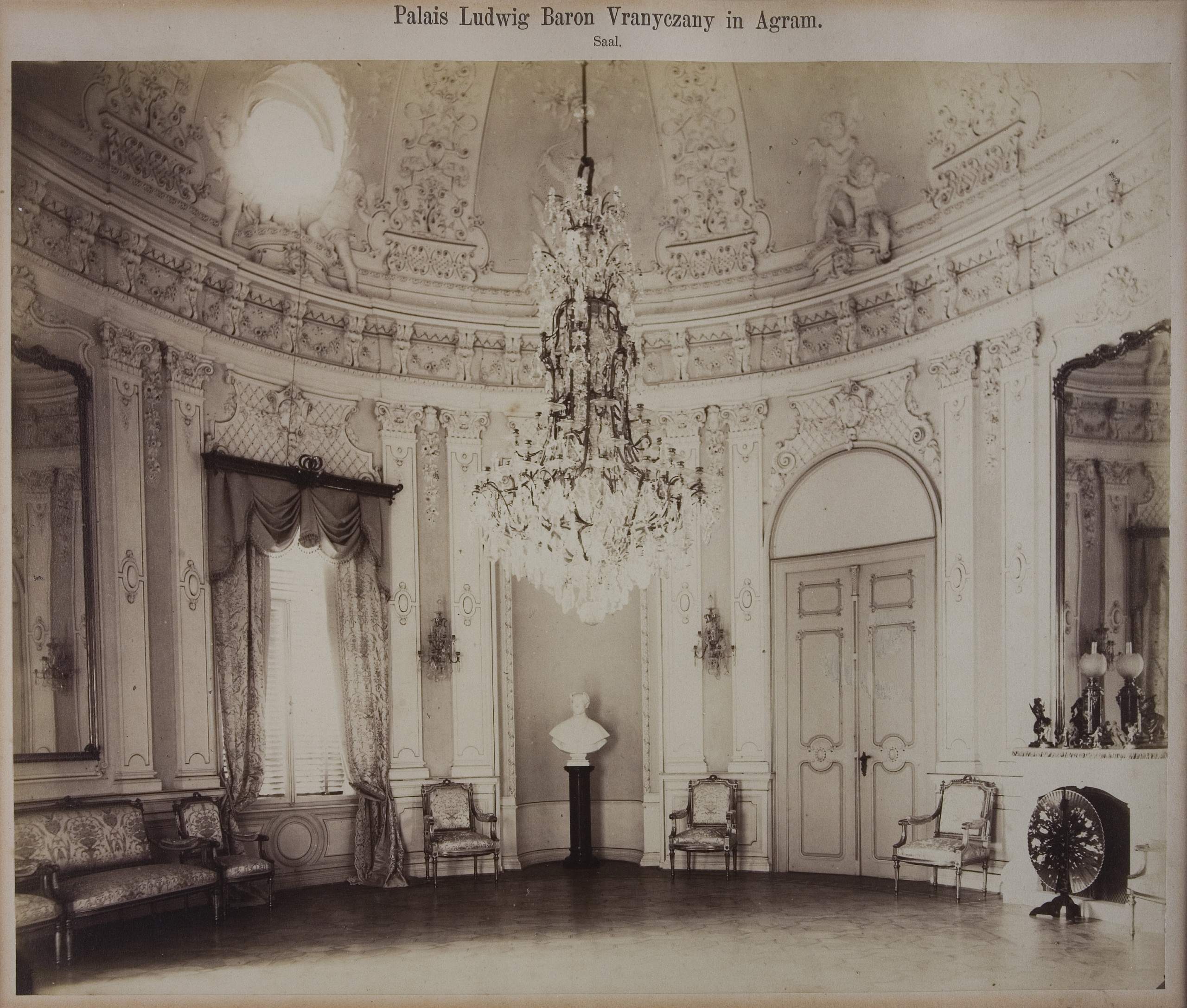
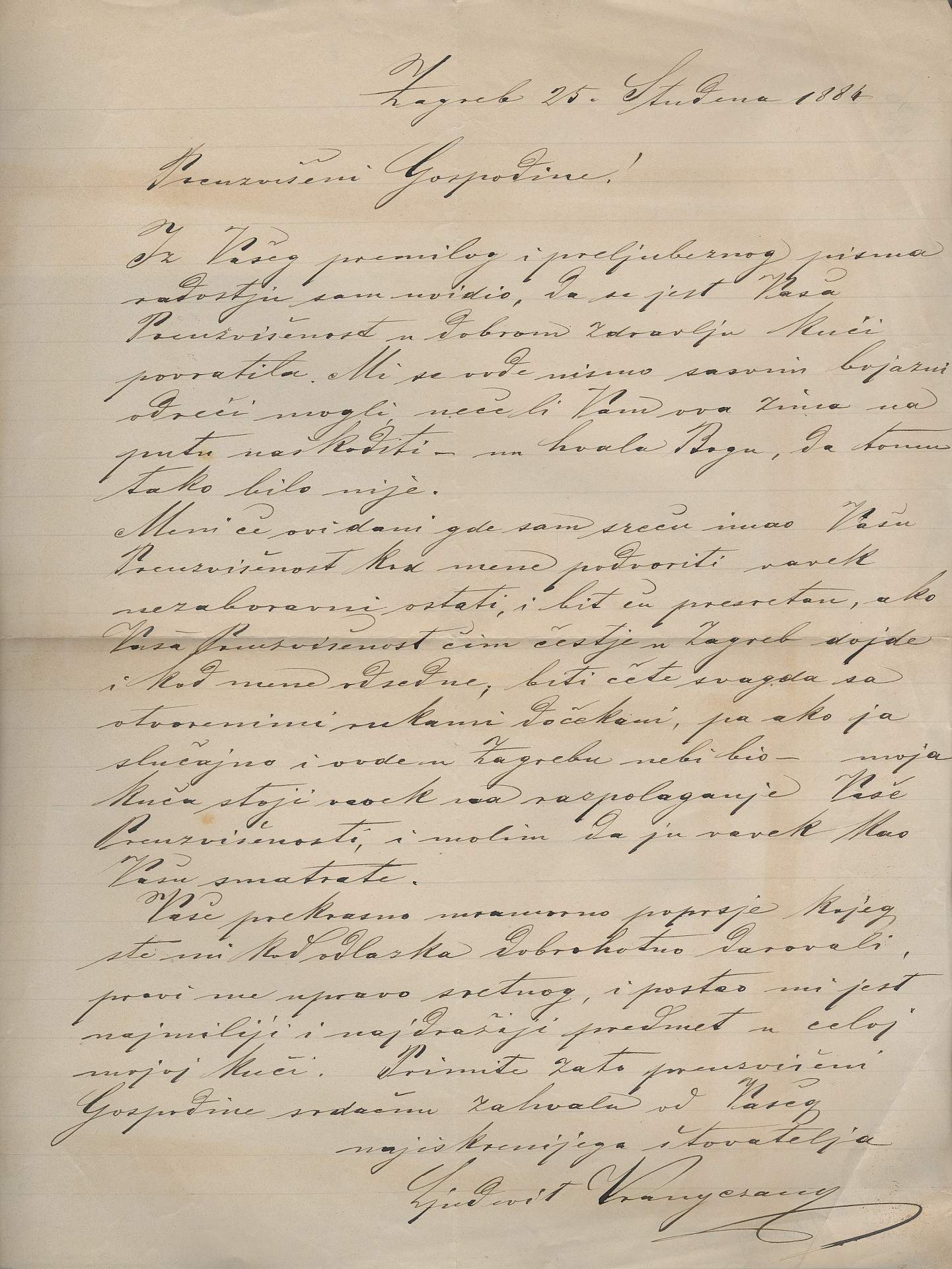
Zagreb 25th November 1884
Esteemed Sir!
It is with great happiness that I have understood from your dear and kind letter that Your Eminence has returned home in good health. We could not be completely without fear that this cold winter would not do you harm on your journey, but, praise God, this was not the case.
For myself, these days in which I have had the pleasure to host Your Eminence in my house will never be forgotten, and I will be overjoyed if Your Eminence would come to Zagreb more often and stay with me. You would always be welcomed with open arms, even if it so happened that I was not in Zagreb – my house is always at your disposal. I beg Your Eminence to consider it yours as well forever.
Your wonderful marble bust, which you have so kindly given me at your departure, makes me happy, and has become my most cherished and dearest object in my entire house.
Therefore, esteemed Sir, please receive a sincere thanks from Your most earnest admirer, Ljudevit Vranyczany.(Transcript of a letter from Baron Ljudevit Vranyczany to Bishop Strossmayer, 25th November 1884)
Today, another artwork originally from the collection of Ljudevit Vranyczany is a part of the holdings of the Strossmayer Gallery: the oil on canvas Christ and the adulteress from the Baron’s collection of Old Masters, which he gifted to the Gallery around forty years after its opening.

